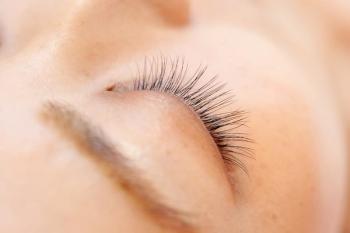
Preparing the periocular region for surgery
Preparing a patient for ocular surgery can pose challenges with cosmetics being widely used. Marc Bloomenstein, OD, with the advice of Optometry Times Editorial Advisory Board member Whitney Hauser, OD, discusses the importance of properly preparing cosmetic users for eye surgery.
Much like the old saying, “You are only as good as the people around you,” eye surgery is only as good as the accompanying tissue and ocular surface. ODs have focused on the cornea and lashes but have not set our high-powered perception on the periocular skin-the layer of skin that is often painted with glitter, mascara, or other pigmented hues to enhance aesthetics, but also increases the challenge of maintaining homeostasis.
Review and manage the periocular surface and the application of cosmetics. I have consistently preached the message that ODs need to pretreat the ocular surface prior to any ocular-related surgery. ODs should check patients for keratoconjunctivitis sicca (dry eye) prior to surgery and advise patients to remove cosmetics thoroughly or cease application.
Previously from Dr. Bloomenstein:
The periocular region
The skin in the periocular region has properties and characteristics that differentiates it from other areas. The lid lacks a subcutaneous fat layer, which makes it more permeable to pathogens and environmental insults.
Due to the absence of a fat layer, the skin over the eye is in direct contact with the orbicularis muscle that controls the blink reflex-this is why we see chassis and the appearance of an aging eye. Aside from the lid’s role in protecting the globe, the eyelids house the meibomian glands.
The meibomian glands are the most superficial layer of the tear film that helps to alleviate desiccation and provides a refractive tear lens for refraction.
Cosmetics pose ocular risks
Because many of our patients dabble in the science of eye painting-and I do not have the experience to discuss what to use or not use-I spoke with my friend, eye cosmetic wearer and dry eye expert Whitney Hauser, OD.
Dr. Hauser says products like mascara, eyeliner, and eyelash glue are intended for use on or near the eyelid.
“Cosmetic products are often used daily and sometimes applied multiple times a day,” says Dr. Hauser. “These products may contain chemicals, preservatives, or other toxins that make them potentially dangerous to the periocular skin or the eye.”
Related:
The eyelid contains some of the thinnest skin on the body. That lack of fat layer means it is more porous than other skin surfaces, she says.
“Even if products are not specifically used in these sensitive skin areas, there is still potential for cosmetic products to seep into the eye elsewhere after application,” says Dr. Hauser.
MGD consequence
The added risk of gland destruction or debris in and around the lid margin may have negative effects on the potential for proper testing.
“The most obvious heath consequence of indiscriminate cosmetic use in the periocular region is meibomian gland dysfunction (MGD),” says Dr. Hauser. “Keratinization at the lid margin can influence MGD by clogging the glands, thereby shutting down meibum secretion. If you add eyeliner or another cosmetic product to that naturally occurring process, the risk of causing obstruction elevates.”
Application techniques risky
“Certain trends in cosmetic use may further compound the complications risk,” Dr. Hauser says. “To bring more attention to the eyes, some individuals using techniques called ‘tightlining’ and ‘lining the water line.’”
“Tightlining” is using a cosmetic product (such as an eye pencil, gel product, or liquid eyeliner) on the inner upper lash line. “Lining the water line” is when an eye pencil is used to apply color to the lowermost exterior portion of the eyelid.
Each cosmetic application technique requires the application of a cosmetic product over the area of the meibomian glands. Even if the product is nontoxic to the tear film, it can still permeate, says Dr. Hauser. Patients who use these cosmetic techniques should be warned that they are potentially damaging the glands that make up their tear film.
Males not exempt
ODs should remember male patients might be using cleansers or moisturizers around the eye with ingredients that may impact eye health.
“Our bias is to believe that this is a problem only in our female patients,” says Dr. Hauser.
Treating patients with eye specific cleansers will help ensure ODs are alleviating the potential for complications and not creating a more hospitable inflammatory environment.
When you are preparing a patient for surgery, management of this area becomes even more critical. Take the time to prepare around and in the patient’s eyes for the best surgical success.
Newsletter
Want more insights like this? Subscribe to Optometry Times and get clinical pearls and practice tips delivered straight to your inbox.


















































.png)


